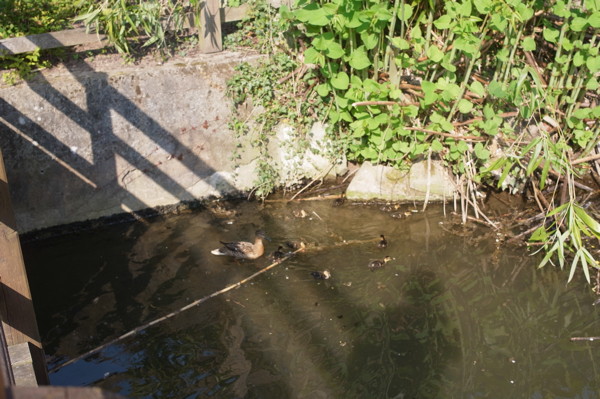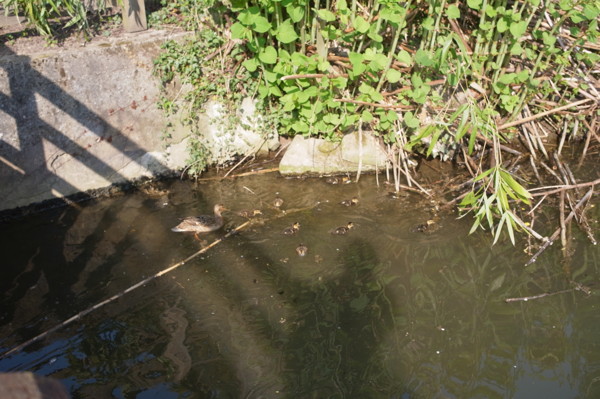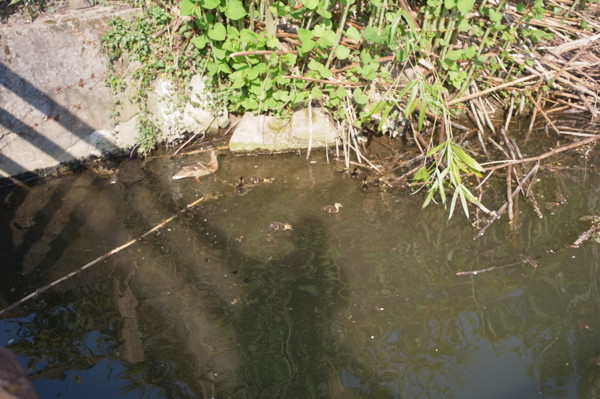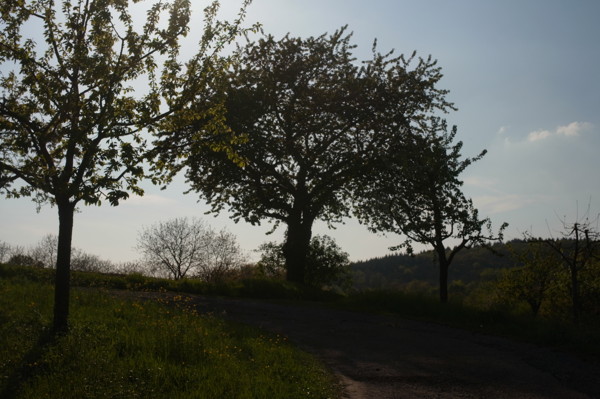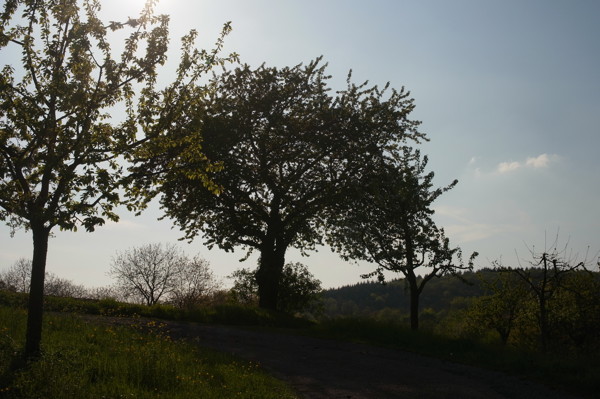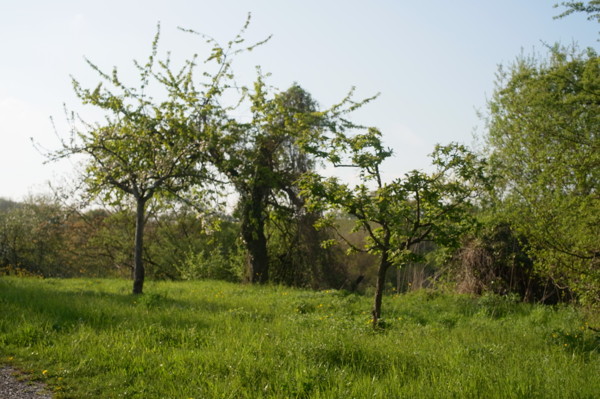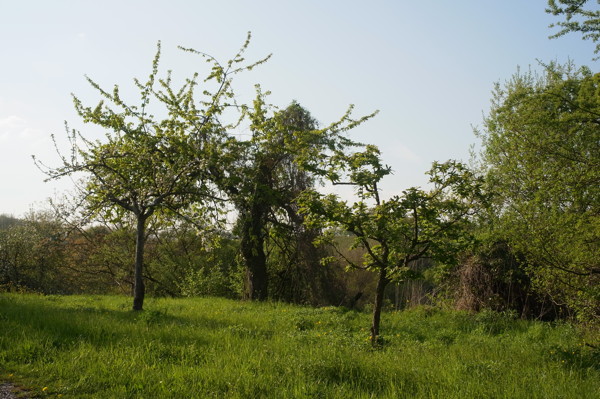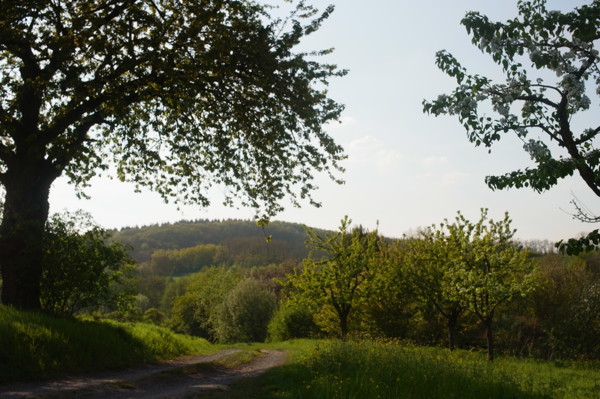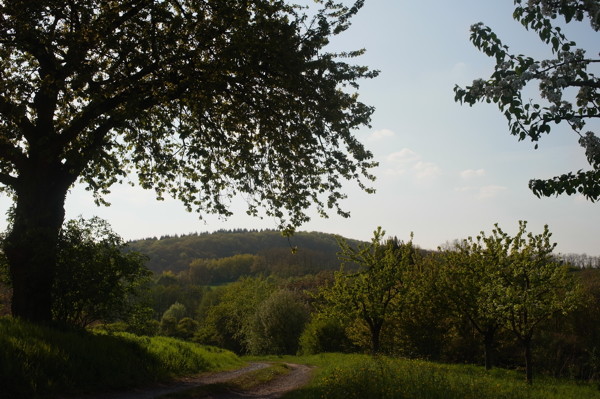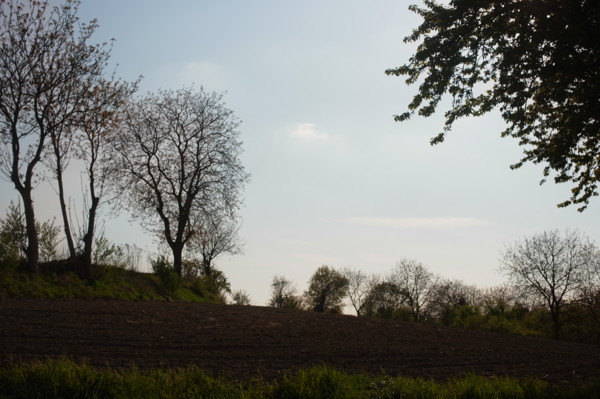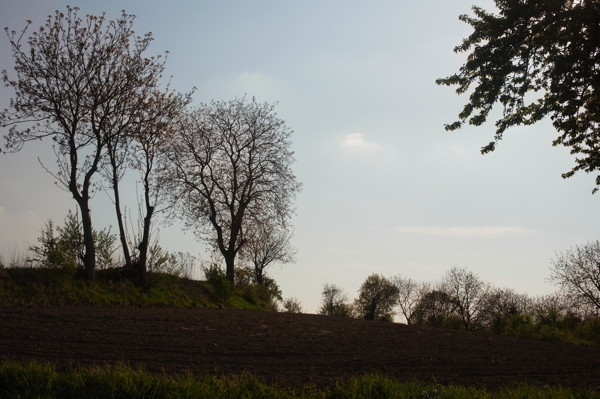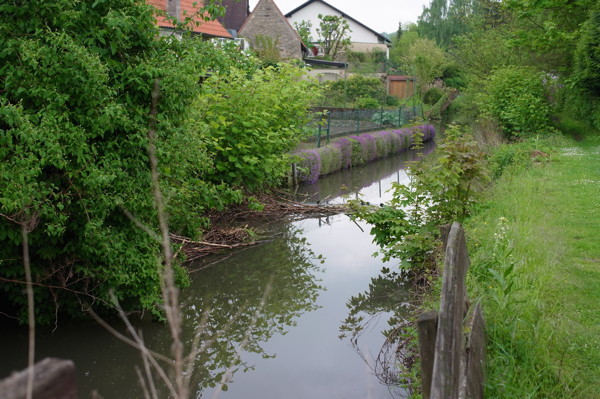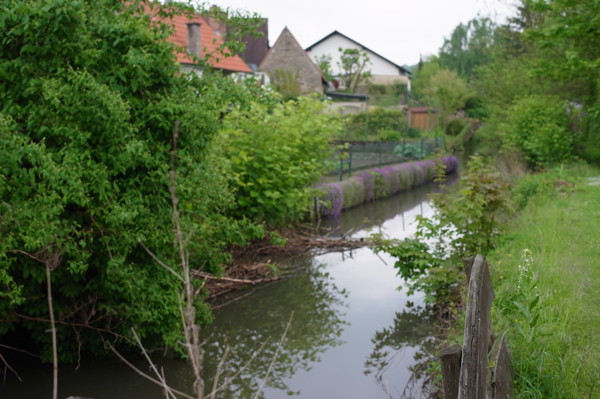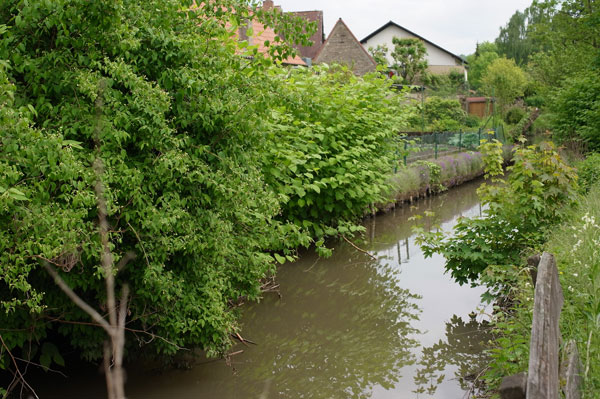Ricoh GXR: Pitfalls of Full Press Snap
The Issue: Focus Way too Far in the Foreground | The Solution: Full Press Snap (Or: The Pitfalls of "Full Press Snap") | Lessons Learned | Forum Discussions
Archive
This page describes an issue that I had with both my A12-50 and my S10 camera units, namely that on a number of photos the focus was way too far in the foreground so that the images looked more or less fuzzy. The somewhat surprising solution to this issue was to turn the full press snap function OFF (which is ON by default). However, this solved the issue only for the A12-50 module. For the S10 module, I had to engage in further investigations, because there the fuzziness was distributed unevenly across the photos (more fuzzy on the left half than on the right half). The complete S10 "fuzziness" story can be found on my issues page.
Because the GXR's full press snap function plays a fundamental role in this story, it is described in more detail below (and on the GXR characteristics page). Please note that I do not question the full press snap functionality as such - it was requested by Harold Glit and implemented by Ricoh on the GRD originally. However, the experiences reported here led to a number of thoughts as to its current integration into the GXR user interface (which is also as Harold had requested it). Here it shows that I am a usability professional and may have a different opinion than a professional photographer. I will present these thoughts in "Lessons Learned." Moreover, this page also serves for demonstrating that it needs some time, gray cells, and luck to solve such issues. With the knowledge that I have today on distance values in the Exif data, it would have been a little bit faster...
The Issue: Focus Way too Far in the Foreground
In the following, I will describe the issue and list my initial ideas about its cause.
Issue and First Hypothesis: Autofocus Irritated By Foreground Objects?
With both the A12-50 and the S10 camera units, I observed that on quite a number of my photos the focus was way too far in the foreground - only the foreground was sharp while the remainder of the photo was more or less fuzzy. My initial assumption was that the autofocus (multi autofocus) had been irritated by objects in the foreground. These objects often seemed to consist of fine structures, such as grass or branches. Such an irritation is a typical observation when using multi autofocus, and the usual remedy is to use spot autofocus. However, I did not want to add another "manual" step to the shooting process and therefore did not accept this as a valid solution for me.
In addition, there were some photos where objects in the foreground seemed to have an effect on the focus, even though they themselves were not included in the photo. This should be impossible with contrast detect autofocus (to explain this behavior, I initially assumed that there was some camera shake...). Thus, these photos were an argument against my "irritation" hypothesis.
Furthermore, in a number of cases, I had photos with correct focus as well as with wrong focus with nearly identical scenes and shot closely one after the other. Of course, minor differences in the scenes might have been the reason for the different behaviors of the autofocus, but in some cases, the images were nearly identical. The only hint for me was that these photos had been taken fairly fast.
Finally, it also looked as if these problems had increased after the firmware update published in March 2010. I received at least a preliminary confirmation from Ricoh that the new autofocus algorithms might be the cause of the issues. But in hindsight, the update seems to have been irrelevant...
The sample images below illustrate the "issues" and were taken with the A12-50 module. I got similar samples for the S10 module but at a closer look there was an important difference: For the S10 module the fuzziness was distributed unevenly.
Some Samples (A12-50)
Click the images for original samples. Originals are reduced to 50% in order to save server space (they do not show the Exif distance data).
Samples with Ducks |
|
|
Objects in the foreground on left and right side |
Object in the foreground on right side |
|
Object in the foreground on right side |
Correct focus |
|
Object in the foreground on left side |
Object in the foreground on left side |
|
Object in the foreground on left side? |
Object in the foreground on left side |
|
Focus OK |
Focus not OK, nearly identical section |
Further Samples |
|
|
Focus not OK |
Focus OK |
|
Focus not OK |
Focus OK |
|
Focus not OK |
Focus OK |
|
Focus not OK |
Focus OK |
In 2015, I re-examined the photos and inspected the distance that was listed in the Exif data. In all cases, there is a distance of 2.5 m listed. Below, you will see what this means. (I found many other photos from that time with the same result.)
The Solution: Full Press Snap (Or: The Pitfalls of "Full Press Snap")
Intermezzo (S10)
Because of another, or better, a related issue (images fuzzy in the left half, see GXR issues), I had sent my S10 module to Ricoh for inspection at the end of April. Inspection took a bit longer than expected, but I had my module returned shortly after mid-May. Ricoh's technicians at Pirmasens, Germany, could not find an issue with the module and recalibrated it. Mr. Wutzke, my contact at Ricoh (Düsseldorf, Germany), took also a look at the module and confirmed that it was OK. During the first three days after the module had arrived, I took more than a thousand photos to check, whether the issues that I had complained about had really gone. The results were somewhat indecisive: There were still a few fuzzy photos, but these were not as convincing as the samples I had provided for Ricoh. There were also both photos that were more fuzzy in the left than in the right half of the image, and there were also photos on which the focus was way too much in the front.
Stumbling on a Hypothesis
So what should I do: return the module, or play the role of a detective? When I looked at a few more samples, I was close to sending the module back. But I also like to play detective. For reasons that I do no longer remember (probably for getting some inspiration), I scanned the GXR manual, and after a while hit on a function that I had never taken notice of: full press snap. And indeed, its description made it look like a possible solution to my issues because it does the following (from Ricoh manual, adapted):
- Take photographs without pausing to focus the camera when Multi AF or Spot AF is selected for focus.
- If the function is ON the following happens: If the shutter-release
is pressed all the way down in one motion, the camera will take a picture
at the focus distance selected for Snap Focus Distance (which is 2.5 m by
default). Choose this function when quick shutter response is required.
Tip: Autofocus - The camera will focus normally if you press the shutter-release button halfway (page 69 in the English manual, adapted). - Full press snap is enabled (ON) by default!
Why can this function be responsible for many of my fuzzy images on which the focus lies too far in the foreground? The simple answer is that often I must have pressed the shutter-release button already fully down during focusing because I was in a hurry. As full press snap is ON by default (I had never bothered to change that, because I had overlooked this function)*, the camera switched to fix focus at a distance of 2.5 m (which is the default distance for fix focus) in such cases. Depending on the focal length and the f-stop used, this procedure led to more or less fuzzy images, particularly in a focal range between 50 mm and 72 mm (equiv.).
*) When full press snap is activated, "FS" and the snap distance are displayed in the viewfinder/on the LDC screen. Obviously, these symbols did not tell me much at the beginning. Moreover, the existence of "FS" is not mentioned in the GXR manual.
Checking the Hypothesis
After this "discovery," I performed a number of tests under the following conditions:
- Full press snap OFF, autofocus, shutter half pressed until focus is ready
- Full press snap OFF, autofocus, shutter fully pressed
- Full press snap ON, autofocus, shutter fully pressed (fix focus set to 2.5 m (default) and in some cases to 1m -> easier to recognize that fix focus was applied
- Full press snap ON (irrelevant), fix focus set to 2.5 m (default) and in some cases to 1m -> easier to recognize that fix focus was applied
For later tests, after I had more or less confirmed my hypothesis, only some of the conditions listed above were needed.
Under the first condition, focus should be OK if not irritated by foreground objects. The same should hold for the second condition. Under the third condition, fix focus takes over, and under the fourth fix focus is, of course, also applied.
My results were not 100% as expected, but consistent enough to indicate that full press snap was indeed the reason for my issues with focus distance for the A12-50 module and for some of the issues with the S10 module. The third and the fourth condition allowed me to compare the fuzziness of images to make sure that fix focus was indeed the reason for the fuzziness. This hypothesis could largely be confirmed for the A12-50 module (see samples below) and only partially for the S10 module (because it had also other issues).
Test Samples (A12-50)
Click the images for original samples. Originals are reduced to 50% in order to save server space.
|
Original photo: focus is OK |
Original photo: focus on the foreground |
|
Test photo: multi autofocus |
Test photo: fix focus at 2.5m |
Obviously, the fix focus test photo with a distance of 2.5 m resembles the original fuzzy photo, which shows a distance value of 2.5 m in the Exif data (see here for information on how to reveal the distance in the Exif data). This makes it plausible that full press snap was in action.
There was also a version with full press snap that looks like the fix focus version, but since I did not know initially, where focus data are stored in the Exif data, it did not help me - and regrettably, I discarded all the original versions of fuzzy photos...
Afterword
In the meantime, I know where to look for focus information in the Exif data, and I added the Exif distance to the photos above, of which I still have original versions available (see here for information on how to reveal the distance in the Exif data). Except for one photo, all fuzzy photos show the same distance value in the Exif data (and the differing one is close), which corresponds to a distance of 2.5 m. All in all, with my present knowledge, I would probably have found the reason for the fuzzy photos much faster and with less effort...
Lessons Learned
When I created this page, no other user seemed to have stumbled over or complained about this issue. Am I the only impatient user who presses the shutter-release button down too early so that the camera switches from autofocus to fix focus (without notifying the user of this change)? Regrettably, the electronic viewfinder mostly does not indicate that a fuzzy images has been taken, because its resolution is not sufficient.
In the meantime, I have not only become older, but also a tiny bit wiser. The "issue" is not a bug, but a feature and caused by the full press snap function as long as it is set to ON*, which is the default. Thus, as soon as I had set full press snap to OFF, the "issue" was gone.
*) When full press snap is activated, "FS" and the snap distance are displayed in the viewfinder/on the LDC screen. Obviously, these symbols did not tell me much at the beginning. Moreover, its existence is not mentioned in the GXR manual.
Full press snap is a function that had been requested by Harold Glit and implemented by Ricoh according to his specification (as I was told by him), including enabling the function by default. It is intended as a means not to miss a shot because of slow autofocus. The default distance of 2.5 m is useful for street photography and many indoor situations, it is less useful for landscape shots.
Finally, I also learned how to find the distance in the Exif data so that I was able to confirm that the fuzzy photos were taken with a distance setting of 2.5 m, which corresponds exactly the default snap focus distance.
Conclusions
So, what are my conclusions?
In my opinion, full press snap is an "expert function" that should not be enabled by default. My assumption that a lot of users might overlook it has been confirmed in a few anecdotic cases, but I suspect that a considerable fraction of GXR users will not be aware of it. Thus, some users may not be aware of this function, may not know what the symbol "FS" means, or may just overlook it. Therefore, they may be puzzled by the results that they get from time to time: unexpected fuzziness. They may not realize that full press snap took over, and it will be hard for them to find the real reason for the fuzziness. Probably, they will simply assume that Multi/Spot AF failed.
As a usability engineer, I come to the following conclusions:
- Setting full press snap to OFF by default, prevents "unknowing" users from being puzzled by the camera's results. For "knowing" users (or experts) it is just one little effort to go into the Shooting menu and enable the full press function. From then on, no further effort is needed.
- A "golden" UI design rule states that a system needs to provide feedback when it does certain changes or overrides the users' original intentions. Thus, the GXR should offer some sort of feedback after a photo was taken* to indicate that full press snap took over (see my suggestions for feedback below).
*) When full press snap is activated, "FS" and the snap distance are displayed in the viewfinder/on the LDC screen.
Suggestions to Ricoh
Pulling all things together, my suggestions to Ricoh for changing the GXR user interface with respect to full press snap are:
- Change the default setting for full press snap to OFF instead of ON. In this case, there will be no issues with fuzzy images created through fix focus even if the user presses the shutter-release button too fast. Thus, the default would be on a "safe" function, not a potentially "dangerous" one. Full press snap is "dangerous" in cameras with a shallow depth of field (GXR with A12-50, GXR with S10 at 72mm).
- Indicate in the viewfinder/LCD, whether autofocus or fix focus was used in the end. For example, the focus icon could show the "S in a box" icon for a second, whenever fix focus was selected by full press snap. From a usability point of view, such an indicator would make transparent to users what happened and thus would make an intransparent function transparent to them.
- Add the respective information to the Exif data that document a number of focus data (this data seems to be stored in Ricoh-specific fields and is not available to Exif data readers) and, particularly, what happened with full press snap. This information would allow users to at least find out in hindsight what actually happened.
- Add to the manual that "FS" is displayed in the viewfinder/on the LCD screen when full press snap is activated ("FS" is displayed in the location where symbols for other focus modes appear).
Further Lessons Learned...
Another lesson that I learned is that you have to solve all those mysteries on your own or, at least, nearly... There is no real help from Ricoh who obviously do not, and most probably cannot, have a clue of what mysteries can happen to the users of their cameras... And I also learned that this issue had been discussed in the Ricoh forum at dpreview.com but I had overlooked it...
Forum Discussions
I posted this issue in two threads in the dpreview Ricoh forum:
- Am I the only one who has been fooled by full press snap? (ricohforum.com/phpbb/viewtopic.php?f=60&t=4692)
- Am I the only person who has been fooled by "Full Press Snap"? (http://forums.dpreview.com/forums/read.asp?forum=1013&message=35399899)
The discussions were not overwhelming but nevertheless it is interesting to take a look at them. At least, I am not the only person who has been fooled by full press snap...
| 19.11.2020 |
